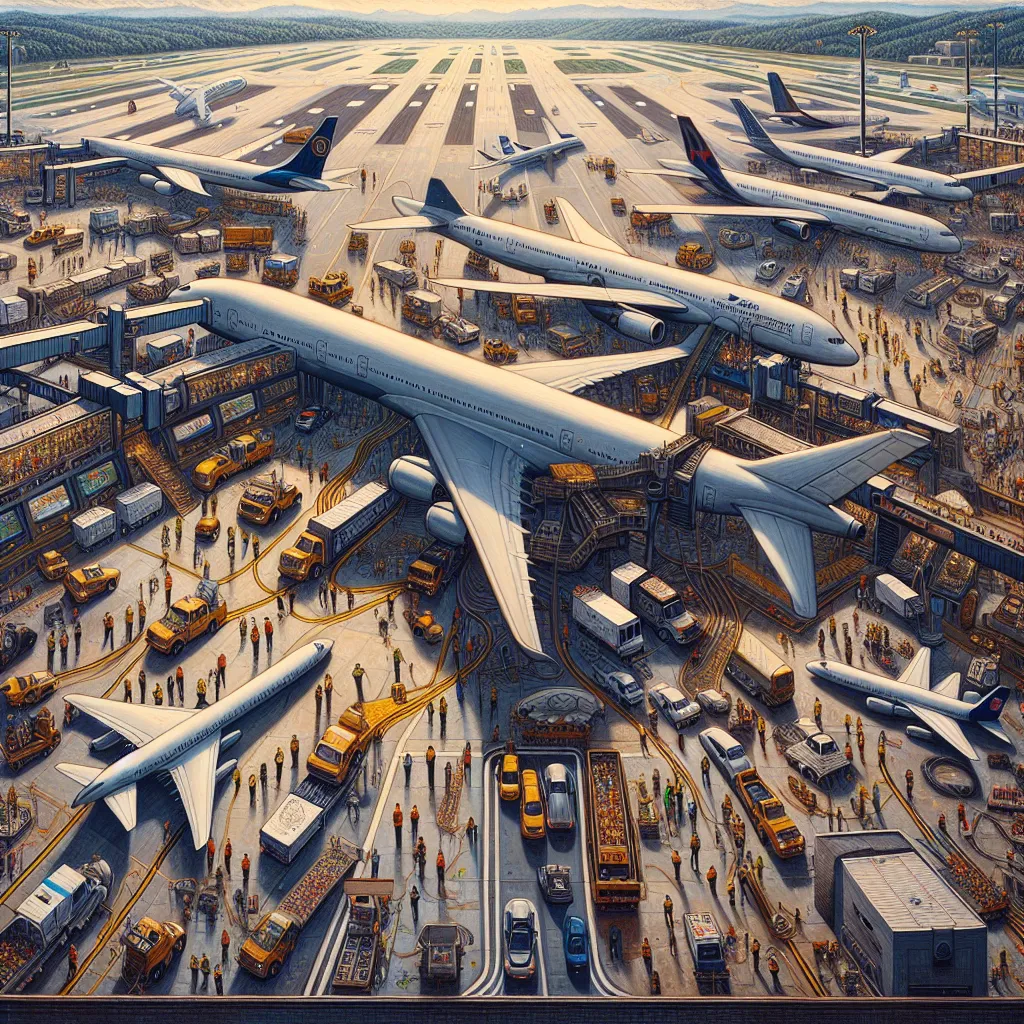Atlanta’s Hartsfield-Jackson International Airport is the world’s busiest airport—handling a staggering number of flights and passengers every day. From the bustling five runways that process up to 250 flights an hour, to the diligent security team checking 95,000 bags daily, this airport is a hive of nonstop activity.
With around 2 million passengers passing through weekly and employing a workforce of 63,000, this airport is nothing short of a city. The challenge of managing such enormous volume never ceases, with systems and staff working in perfect harmony behind the scenes. It’s a hidden world, almost like a secret operation ensuring each flight goes off without a hitch.
Every day, the eye-watering logistics involved become evident. Handling more flights than London’s Heathrow and Gatwick combined, ATL hosts 2,700 flights each day, necessitating an army of ground controllers coordinating activities across 192 gates to ensure each aircraft is turned around swiftly. Fuel is pumped through a concealed network of pipes, while baggage is monitored using high-tech systems containing microchips, reducing the risk of lost luggage.
Ramp controllers expertly manage the flow of aircraft, ensuring planes aren’t just sitting on the tarmac but are either being prepped, refueled, or redirected as needed. Pilots, resting in lounges between flights, rely on vital paperwork before they can take off—seemingly old school but crucial for flight operations.
Security protocols are Sherlock Holmes-level precise. TSA agents sift through bags and sniff out discrepancies with the help of sniffer dogs, X-ray machines, and explosives detection techniques, ensuring nothing dangerous makes it aboard.
Maintenance is a ceaseless task from top to bottom. Every night, engineers plunge into repairing airstrips, scrubbing facilities, and ensuring everything’s in peak condition before dawn arrives. They fix everything from broken lights on runways to servicing airplane engines, ensuring each departure and landing is seamless.
The heart of the airport throbs even underground, where a vast plane train shuttles passengers between gates. The maintenance of this automated railway is no small feat, revealing just how intricate the operations are.
Wildlife control is another surprising yet essential task. Teams work to deter birds and other animals that could interfere with the flights, using everything from distress calls to propane cannons.
The FAA keeps a vigilant eye on runway safety, ensuring instrument landing systems are functional; a crucial task that ensures planes land safely even in the worst conditions.
It’s a 24/7 operation buzzing like a beehive. From unseen workers in the dead of night to high-tech machinery operating in sync, the invisible hands behind Atlanta’s airport keep the world’s busiest airport running like clockwork. Every role, every task is crucial in this city-like ecosystem, proving that behind every seamless journey lies a team dedicated to staying invisible yet indispensable.






